|
за июнь 2004 года.
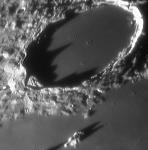 Peaks of Plato
Peaks of Plato
10.06.2004 | Лунное фото дня
The Moon always repays observation. For sociological reasons (sleep and jobs), Plato is commonly studied before midnight, and so the sunrise view with shadows cast by peaks on the eastern ramparts is most familiar.
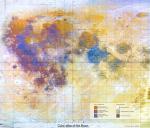 Color Moon Map
Color Moon Map
9.06.2004 | Лунное фото дня
The Jan 28 LPOD astonished many observers with its detailed color rendition of the Full Moon. Now that imager, Filipe Alves, has used advanced computer manipulation to create a Mercator-like projection color image of the Moon - the first I know of. This is a level of sophistication that is new to amateur Moon mapping.
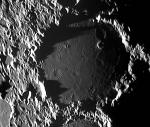 Ptolemaic Sunset
Ptolemaic Sunset
8.06.2004 | Лунное фото дня
Ptolemy, the Greek astronomer, dominated medieval science, and his crater dominates the central region of the Earth-facing hemisphere of the Moon. Ptolemaeus, the Latinized version of the Greek name, is 153 km wide and 2.6 km deep. The rim is battered and a piece is missing on the west side.
 Marvelous Marius Rille
Marvelous Marius Rille
7.06.2004 | Лунное фото дня
Sinuous rilles have led some lunar scientists astray. The curving outlines led to proposals that such rilles were meandering water streams, although by shape alone a giant worm might have been equally defensible! But the Moon's lack of water and life eliminate those origins.
 Sea of Dryness
Sea of Dryness
6.06.2004 | Лунное фото дня
The classical names for the lunar dark areas were all nautical, but all were dreadful misnomers since the Moon has always lacked seas and oceans. So today, we will examine the Sea of Dryness rather than Mare Humorum, the Sea of Moisture.
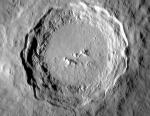 Copernicus
Copernicus
5.06.2004 | Лунное фото дня
Copernicus is the most important crater on the Moon. How can I call out any one as "most important," you ask? Let me modify the first sentence and you will probably agree: Copernicus is the most important crater on the Moon because of what it has taught us. Here are three lessons.
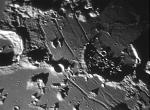 Hippalus Arcs
Hippalus Arcs
4.06.2004 | Лунное фото дня
Impact basins are characterized by a family of features such as multiple rims, concentric fractures and ridges, a central depression, radial markings, and extensive ejecta deposits. This list results not from a single perfect basin, but from recognizing consistent patterns in all the Moon's basins.
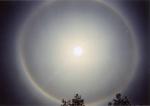 Lunar Ring
Lunar Ring
3.06.2004 | Лунное фото дня
Some people think they are rare, but a ring around the Moon - a Moon halo - is not especially. However, they are beautiful and uncommon enough that its fun to get other folks to come out of the house to see them.
 Gassendi
Gassendi
2.06.2004 | Лунное фото дня
The advent of webcams and image compositing and enhancing software has given amateur astronomers with modest size instruments the ability to acquire lunar images that equal or surpass the very best professional images. Now amateurs are pushing up against the resolution of space craft imaging.
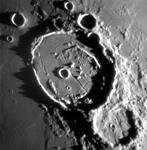 Posidonius: Rilles and Uplift
Posidonius: Rilles and Uplift
1.06.2004 | Лунное фото дня
Posidonius is a beacon of interest along the otherwise bland north-eastern shore of Serenitatis. The large (95 km wide, 2.3 km max depth crater may have originally looked like Copernicus with broad terraced walls and a scattering of peaks centered on a deep, flat floor. But thats not how it looks now!

